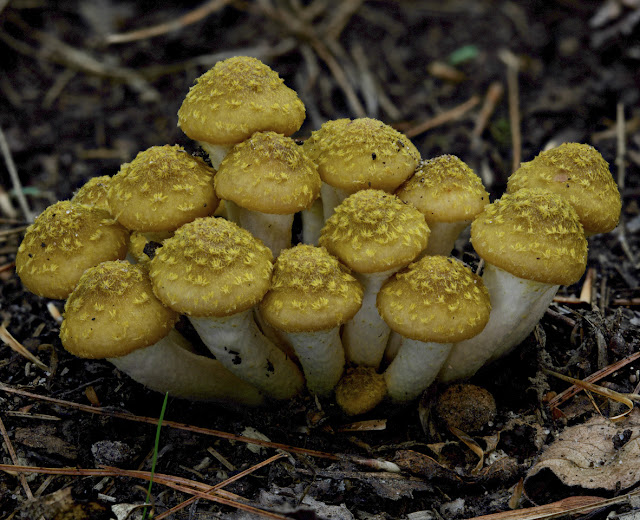 |
| Honey mushroom |
 |
| Rhizomorphs |
Mark Bower sent me these photos and facts which I have judiciously edited.
This honey mushroom (Armillaria mellea) can be found fruiting in large numbers at the base of hardwood trees in the Ozarks, exclusively in the fall (see photo). It is a parasite which attacks the roots and butt of the unfortunate tree. It also can spread under the bark of said tree or from tree to tree using rhizomorphs which look like tangled bootlaces.
.jpeg) |
| Entoloma abortivum |
 | ||
| "Shrimp of the woods" |
Unbelievably, shrimp of the woods is considered a choice edible. Seriously? In addition to its homely appearance, it needs to be carefully identified to avoid poisoning by other lookalikes (as if there are others that are a less appalling / more appealing species.) As my mother used to say back in the 1940's, "There is no accounting for taste" said the woman as she kissed her cow!"
So now we have chicken of the woods, hen of the woods, shrimp of the woods and lobster mushrooms. What’s next? Mark has just identified this new species, the pig of the woods, Swinus silvae-bowerii.
 |
| Pig of the woods - Swinus arboritus bowerii |
Editor's note: Actually, this is not a Missouri fungus. Mark tells me this actually was Fistulina hepatica, the ox tongue fungus which he photographed in Tasmania. It was a young specimen and he added the features, like lipstick on a pig!